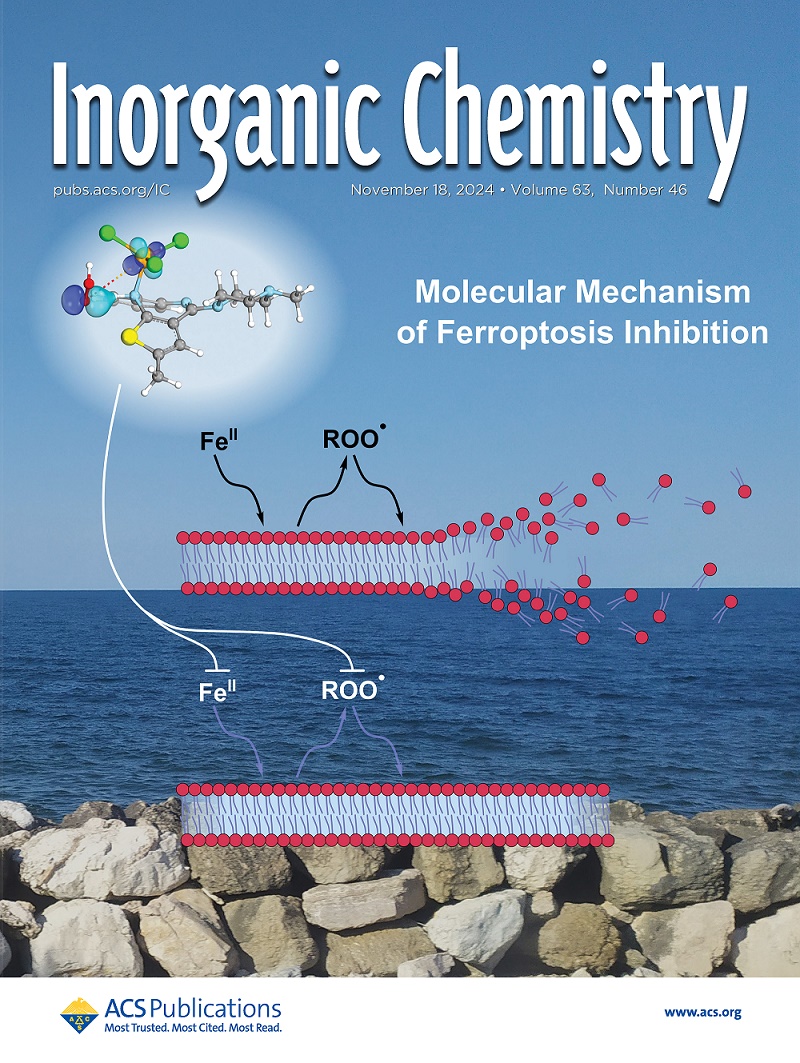Systematic Investigation of Coordination Chemistry in Iridium(III) and Ruthenium(II) Complexes Derived from Pyridyl–Amine Ligands and Their Anticancer Evaluation
IF 4.3
2区 化学
Q1 CHEMISTRY, INORGANIC & NUCLEAR
引用次数: 0
Abstract
A systematic investigation of the coordination chemistry of iridium(III) and ruthenium(II) complexes synthesized from pyridyl–amine ligands was performed, focusing on how ligand steric hindrance and metal centers affect oxidation behavior, coordination modes, and biological activities. The study revealed that steric hindrance at the ligand’s bridge carbon strongly influenced both oxidation behavior and coordination modes. Smaller substituents (e.g., H and Me) facilitated oxidation to form pyridyl–imine species under adventitious oxygen, whereas bulky substituents (e.g., i-Bu and mesityl) suppressed oxidation, yielding stable pyridyl–amine or 16-electron pyridyl–amido complexes. Moreover, iridium(III) complexes were more prone to oxidation than the corresponding ruthenium(II) complexes under similar conditions. The aqueous stability of the newly synthesized complexes was confirmed. Cytotoxicity assays demonstrated that most of the complexes exhibited notable anticancer potency against A549, HeLa and cisplatin-resistant A549/DDP cancer cells. Mechanistic studies suggested a redox-driven pathway involving the catalytic oxidation of NADH to NAD+, the elevation of ROS levels and depolarization of the mitochondrial membrane. Notably, pyridyl–amine complexes induced apoptosis, while 16-electron pyridyl–amido complexes did not, though both caused S phase cell cycle arrest. Additionally these complexes can inhibit A549 cell migration, suggesting their potential to reduce cancer metastasis.

吡啶胺类铱(III)和钌(II)配合物配位化学的系统研究及其抗癌评价
对吡啶胺配体合成的铱(III)和钌(II)配合物的配位化学进行了系统的研究,重点研究了配体的位阻和金属中心对氧化行为、配位模式和生物活性的影响。研究表明,配体桥碳上的位阻对配体的氧化行为和配位模式都有很大的影响。较小的取代基(如H和Me)促进氧化形成吡啶-亚胺,而大取代基(如i-Bu和甲酰基)抑制氧化,生成稳定的吡啶-胺或16电子吡啶-胺配合物。此外,在相同条件下,铱(III)配合物比钌(II)配合物更容易氧化。新合成的配合物的水稳定性得到了证实。细胞毒性实验表明,大多数复合物对A549、HeLa和顺铂耐药的A549/DDP癌细胞具有显著的抗癌作用。机制研究表明,氧化还原驱动的途径涉及NADH催化氧化为NAD+, ROS水平升高和线粒体膜去极化。值得注意的是,吡啶胺配合物诱导细胞凋亡,而16电子吡啶胺配合物则没有,尽管两者都引起S期细胞周期阻滞。此外,这些复合物可以抑制A549细胞的迁移,表明它们具有减少癌症转移的潜力。
本文章由计算机程序翻译,如有差异,请以英文原文为准。
求助全文
约1分钟内获得全文
求助全文
来源期刊

Inorganic Chemistry
化学-无机化学与核化学
CiteScore
7.60
自引率
13.00%
发文量
1960
审稿时长
1.9 months
期刊介绍:
Inorganic Chemistry publishes fundamental studies in all phases of inorganic chemistry. Coverage includes experimental and theoretical reports on quantitative studies of structure and thermodynamics, kinetics, mechanisms of inorganic reactions, bioinorganic chemistry, and relevant aspects of organometallic chemistry, solid-state phenomena, and chemical bonding theory. Emphasis is placed on the synthesis, structure, thermodynamics, reactivity, spectroscopy, and bonding properties of significant new and known compounds.
 求助内容:
求助内容: 应助结果提醒方式:
应助结果提醒方式:


